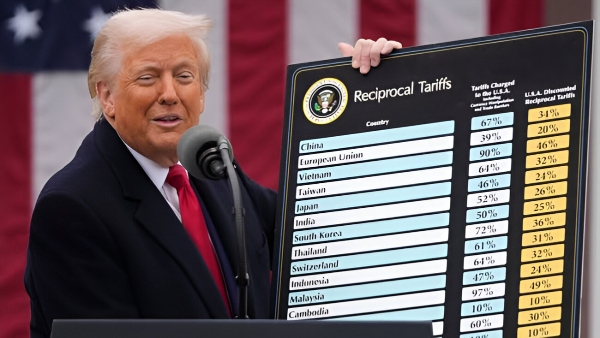Trump Imposes 26% Tariff on Indian Exports: Who Gains and Who Loses?
New Delhi/Washington: In a major shake-up to global trade, US President Donald Trump announced a sweeping 26% tariff on all goods imported from India, effective immediately. The move is expected to disrupt India’s electronics, gems, and jewellery sectors, while certain industries—like textiles—could find themselves at a relative advantage.
The decision, part of Trump’s broader “reciprocal trade” policy, has triggered strong reactions from Indian business leaders and policymakers. While the Ministry of Commerce has termed the tariff increase a “mixed bag” rather than a direct setback, industry experts warn of significant short-term disruptions.
What India Exports and Imports from the US
India’s major exports to the US include:
-
Pharmaceuticals
-
Telecom equipment
-
Gems and jewellery
-
Petroleum products
-
Gold jewellery
-
Cotton garments
Meanwhile, India’s key imports from the US consist of:
-
Crude oil
-
Coal
-
Petroleum products
-
Electric machinery
-
Aerospace components
Industries Hit the Hardest
Among the worst affected by the tariff increase are the electronics and gems & jewellery industries. The US imports nearly $14 billion worth of electronics and over $9 billion worth of gems and jewellery from India annually, making these sectors particularly vulnerable.
Before this hike, Indian electronic exports faced an average 0.41% tariff, while gems and jewellery were taxed at about 2.12%. Now, with a 26% tariff, Indian businesses may struggle to maintain their competitive edge in the American market.
However, auto parts and aluminium—two key export categories—have been spared from additional levies. They remain subject to an existing 25% tariff, imposed as part of previous trade measures.
Sectors Exempted from the Tariff
While most industries are set to take a hit, the pharmaceutical and energy sectors have been exempted from the new tariff structure. The exemption is based on an executive order signed by Trump, though he has hinted that pharma products may face levies in the future.
Products exempted from the 26% tariff include:
-
Pharmaceuticals
-
Copper
-
Semiconductors
-
Lumber
-
Gold and silver bullion
-
Certain minerals and energy products that are not available in the US
Indian Textile Industry Gains a Competitive Edge
Despite the sweeping tariff hike, Indian textile exporters could see an unexpected advantage. Competing nations like Vietnam are facing a 46% tariff on textile exports, while Bangladesh and China are being taxed at 37% and 34%, respectively.
Given that textiles contribute only 2% to India’s GDP, compared to 11% for Bangladesh and 15% for Vietnam, the economic impact on India is expected to be less severe.
How India Compares to Global Competitors
While India is facing new challenges, other Asian economies have been hit even harder. The new US import tariffs stand at:
-
China: 34%
-
Japan: 24%
-
Thailand: 36%
-
Malaysia: 24%
-
Taiwan: 32%
-
South Korea: 25%
-
Vietnam: 46%
With many competitor nations facing significantly higher tariffs, Indian exporters may find new trade opportunities despite the challenges posed by Trump’s policy.
US-India Trade Negotiations Underway
The US currently has a $46 billion trade deficit with India, and tariff disputes have long been a friction point in bilateral relations. However, both nations are actively negotiating a bilateral trade agreement that could lead to tariff reductions or exemptions in the future.
While Indian businesses brace for higher costs and potential supply chain disruptions, policymakers are optimistic that trade diplomacy could help mitigate long-term damage. The Federation of Indian Export Organisations (FIEO) has echoed this sentiment, stating that India is in a “better position” compared to other nations impacted by Trump’s trade policies.
As the global trade landscape shifts, Indian exporters and policymakers must now navigate new challenges and seek out opportunities—amidst rising protectionism in the US market.




